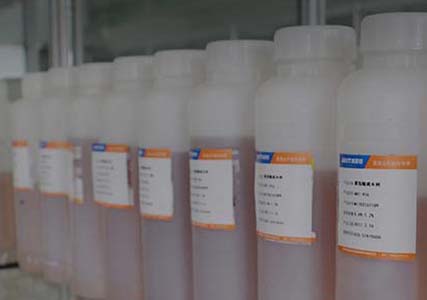Flash setting admixture is a type of admixture that can accelerate the setting and hardening speed of concrete. In use, it mainly functions to make sprayed concrete set quickly and harden fast, reduce rebound loss, prevent sprayed concrete from falling off due to gravity, enhance adaptability in wet or water-bearing rock layers, appropriately increase the thickness of a single spray and shorten the interval time within the sprayed layer.

An accelerator is an essential and very important admixture in the composition of sprayed concrete. It can significantly shorten the time required for concrete to turn from slurry to solid state, losing fluidity and hardening in a few minutes, and reaching final setting in about ten minutes, with high early strength. Accelerators can make the sprayed material set quickly, prevent the spray layer from falling off under gravity, rapidly achieving a certain strength and quickly forming a support layer with certain bearing capacity to meet the special requirements of sprayed concrete engineering. They are mainly used in the preparation of sprayed concrete, sprayed mortar, emergency repair and reinforcement engineering, and grouting waterproof concrete. They have become indispensable in tunnel culverts, subways, mines, and other concrete engineering for spray anchors.
The role of accelerators is to make the concrete set quickly after being sprayed onto the working surface. Therefore, accelerators must have the following properties.
Initial setting should occur within 3 to 5 minutes after the concrete is sprayed, and final setting should occur within 10 minutes.
It should have high early strength, while the reduction in later strength should not be too large (less than 30%).
It should impart a certain viscosity to the concrete, preventing excessive rebound.
It should minimize the water-cement ratio to prevent excessive shrinkage. After hardening, the concrete should have certain strength and durability, and improved permeability resistance.
It should not cause corrosion to the steel reinforcement.
Concrete accelerators rarely use a single compound; they often consist of compounds with multiple accelerating effects. Based on the nature and state of the accelerators, they can be classified into the following four categories according to their main components.
Aluminate Clinker and Carbonate Systems, where the main accelerating components are aluminate clinker, sodium carbonate, and quicklime. Aluminate clinker is produced by sintering bauxite (main component being Na2AIO2, with Na2A1O2 content reaching 60%~80%) at a high temperature of about 1300°C. These products mainly consist of aluminate and carbonate with some other inorganic salts and are in powder form.
Aluminate Clinker and Evaporite Systems, where the main components are bauxite and mirabilite (Na2SO4·10H2O). After being calcined into sulfoaluminate clinker, they are ground together with a certain proportion of quicklime and zinc oxide. The main components of the product are sodium aluminate, tricalcium silicate, dicalcium silicate, calcium oxide, and zinc oxide. This accelerator has a low alkali content, and the addition of zinc oxide increases later strength but the early strength development is slow.
Sodium Silicate Systems, where sodium silicate (water glass) is the main component, compounded with other inorganic salts, forming a liquid product. This type of accelerator sets and hardens quickly, has high early strength, good impermeability, and can be used in low temperatures; however, concrete shrinkage is relatively large, making it mainly suitable for waterproof sealing applications.
New Composite Liquid Accelerators, representing the development direction of accelerators. These include combinations of inorganic accelerators and organic diluents, inorganic and organic accelerators, and some low-alkaline organic accelerators primarily composed of water-soluble resins, such as composites of Al2(SO4)3·K2CO3, Na2CO3, aluminates, fluorosilicates, lithium salts, and tannin-formaldehyde condensate diluents, or organic liquid accelerators mainly composed of calcium acrylate or magnesium acrylate.